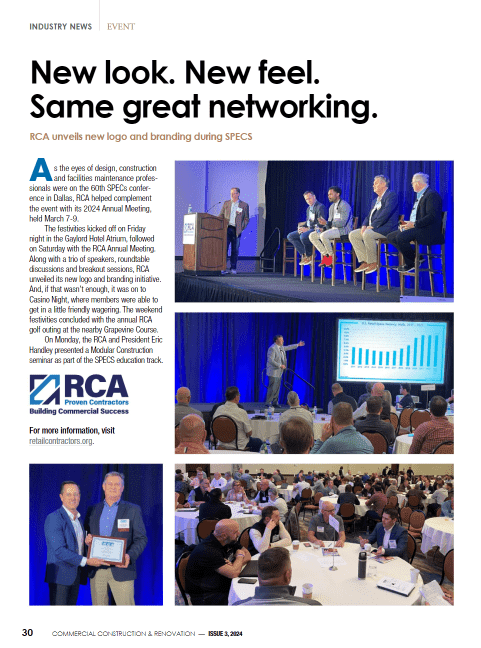When one thinks about it, it’s quite odd that we tend to regard architecture and technology separately. This notion can be observed most noticeably among architects who refuse to embrace technological innovations. However, less hidebound professionals not only embrace innovation but are often the chief disrupters.
Engineers, construction managers, and furniture system designers are a few examples. And with each innovation, some experts warn a mass extinction of traditional architects is imminent. While facing extinction, many traditionalists are disconcerted by feelings of diminished value and faltering success.
Innovate or Perish
David Celanto, author of Innovate or Perish: New Technologies and Architecture’s Future, wrote:
“Architects are among the very few providing custom design services in a product-infatuated society. This presents a profound problem, especially since few clients possess an understanding of the efforts necessary to create custom products, and even fewer are willing to adequately finance them.
“Second, while emerging digital technologies offer architects radically new possibilities for designing and building, current architectural speculation remains largely confined to timid evolutionary steps. Many in the profession are finding it difficult to leave behind the security blanket of past working traditions, while a few are simply choosing to pull it resolutely over their heads.”
Celanto points out that if architects wish to avoid obsolescence and increase their demand, it’s time to adopt emerging technologies. In this way, they’re able to provide consumers with a product-based service that stimulates and satiates their desires. Shrewd architects with a bit of fortitude and ingenuity have already begun to embrace this mindset—improving their marketplace value in ways they never imagined.
It’s Time to Stop Separating Architecture and Technology
By definition, architecture is a form of technology. This is because architecture is not merely an art, it’s a science as well. Furthermore, architecture encompasses much more than single structures like buildings and houses; it encompasses the total built environment. Its scope reaches from the macro-level all the way down to the micro-level; whether it’s city planning, urban design, landscaping, or as simple as designing bedroom furniture.
In essence, architectural technology is the implementation of technology in structural design. As a discipline, it’s often considered a sub-category or integral component of architecture and building engineering. Innovative construction methods became increasingly necessary in the 19th century as new materials and technologies were introduced. As technological advancements grew more rapidly, the relationship between architecture and technology became more precarious.
Professor Stephen Emmitt, Professor of Architectural Practice at the University of Bath stated: “The relationship between building technology and design can be traced back to the Enlightenment and the industrial revolution, a period when advances in technology and science were seen as the way forward, and times of solid faith in progress […] As technologies multiply in number and complexity the building profession started to fragment.”
Up until the beginning of the Second Industrial Revolution, structures were constructed using limited materials: timber, stone, brick, and stone. Roofing materials consisted of tile or slate. Lead, copper, and brass were used for waterproofing and decorative effects. Today, however, construction is significantly more complex. Beyond the numerous layers and elements used to build structures, digital technology is a crucial aspect of access floors and raised floors within modern architecture.
The PropTech Revolution
Historically, technology was integrated into buildings piece-by-piece. Dispersed components operated independently of one another. Touchless activated sensors, security systems, electronic signage, payment transaction systems, et cetera were alienated. However, this is rapidly becoming a thing of the past as buildings, houses, vehicles, and entire cities are seamlessly integrated.
Building management systems or building automation systems (BAS) have been a significant part of commercial building design since 2000. Commercial buildings and residential homes managed by BAS are referred to as “smart buildings” and “smart homes.” However, it’s important to point out that the first smart home wasn’t built until 2018. Constructed in Klaukkala, Finland, the world’s first “smart home” is actually a five-floor apartment block. This multi-family smart home is managed by the KONE Residential Flow automation system created by Finland-based KONE Oyj.
In recent years, the Institute of Electrical and Electronics Engineers (IEEE) and consortia efforts such as QIVICON and Envoy have standardized disparate networking of numerous devices on many physical networks for assorted purposes. Such standards also cover failover systems (usually used for mission-critical programs or reusable services) and quality of service. IEEE’s standards guarantee systems function appropriately to protect human health and safety.
Most if not all “green” buildings and homes are designed to accommodate BAS systems, which are crucial for managing demand response. And while demand response has always been the core function of BAS systems, more sophisticated BAS manage things like air and water consumption, ventilation and humidity, security systems, room pressurization, among other things.
Additionally, green buildings and homes almost always employ as many energy-efficient devices as possible. Since low-power devices run on direct current (DC), the alternating current (AC) from power grids must be converted to DC. But with each conversion, energy is wasted in the process. This wasted energy is counterintuitive to the idea behind investing the extra money in building a green structure. Even net-zero energy designs such as Passivhaus buildings typically demand a BAS to schedule device use, as well as manage heat capture, venting, and shading.
Architecture and technology have always existed in tandem. The imagined contention between the two is merely based on perception—architecture is always behind technological advancement. However, technological advancement is the active component of solutionism, whereas architecture has always had a singular purpose: to protect us from the elements while providing us a comfortable environment. For that, it has fulfilled its purpose. Lastly, most architectural advancements directly or indirectly stem from technological advancements. The fact is, architecture wouldn’t be where it’s at now without technology.










 The 2024 virtual Men’s Round Table will be held Q4, 2024, date TBD.
The 2024 virtual Men’s Round Table will be held Q4, 2024, date TBD.











